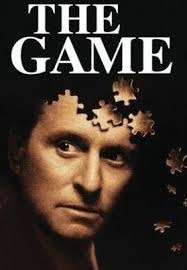CCR Part 2
As the editor and one of the actors for the independent film Taken In The Shadows, I've had the unique opportunity to witness firsthand the remarkable development of our production skills, particularly in the post-production realm. Over the course of this project, I've seen my own abilities grow exponentially, especially when it comes to working with software like Adobe After Effects and Premiere Pro. It's been an incredible journey, both as a filmmaker and as a collaborative partner on this creative endeavor. I'm excited to share some insights into how my technical proficiencies have evolved and the ways in which they've elevated the overall cinematic experience of Taken In The Shadows. One of the areas where I've seen the most significant transformation is in my work with visual effects using After Effects. Early on, my familiarity with advanced techniques like masking, keyframing, and compositing was fairly limited, but through countless hours of experimentation and a dogged determination to push the boundaries, I've become a true master of these sophisticated tools. There's a pivotal scene in the film where my character is experiencing intense psychological turmoil, and I used these After Effects capabilities to subtly distort the frame, creating an unsettling sense of unease. Layering in a pulsing heartbeat in the background was a stroke of inspiration that made the audience physically feel the character's anxiety. But it wasn't just the creative application of these effects that I'm proud of – it was also my ability to seamlessly integrate them with the live-action footage. Mastering the tracking tools in After Effects was crucial, as I was able to lock 3D elements to the movement of the camera and the actors. This level of technical precision was vital in selling those more fantastical moments and keeping the audience fully immersed in the world of the film. Alongside my work in visual effects, my editing skills in Premiere Pro have also undergone a remarkable transformation. I've dedicated countless hours to mastering techniques like dynamic trimming, speed ramping, and precise color grading, all with the goal of elevating the pacing and emotional impact of each scene. One area that I'm particularly proud of is my strategic use of color grading as a storytelling device. I found that subtle shifts in the palette could dramatically alter the mood and atmosphere, whether heightening the suspense in a thriller sequence or conveying a more contemplative, reflective tone. My keen eye for detail and deep understanding of color theory played a crucial role in shaping the overall visual identity of Taken In The Shadows. Perhaps the most remarkable area of growth for me, however, has been in the realm of sound design. I pushed myself to go far beyond simply layering in generic sound effects, instead crafting immersive, custom-tailored soundscapes that truly transport the audience. One technique that I became particularly skilled at was incorporating heartbeat sounds to heighten the tension and visceral quality of certain moments. By meticulously syncing these heartbeats to the visuals, I was able to make the audience physically feel the characters' emotions and experiences. It was a subtle but incredibly powerful effect that elevated the cinematic experience. I also demonstrated a keen ear for blending different audio elements – field recordings, atmospheric pads, strategic music cues – to create rich, realistic ambiances that ground the viewer in the world of Taken In The Shadows. My sound design work played a crucial role in drawing the audience into the story and making them feel truly present. Reflecting on the remarkable transformation I've undergone over the course of this project, I'm truly in awe of how much my technical skills have grown, particularly in the post-production realm. The willingness to dive headfirst into programs like After Effects and Premiere Pro, to push the limits of what was possible, has been both challenging and incredibly rewarding. The visual effects work became a true passion of mine, and I'm proud of the level of sophistication and seamless integration I was able to achieve. Troubleshooting and refining those fantastical elements was a masterclass in using technology to enhance the storytelling. One of the key areas where technology played a vital role was in the post-production realm, specifically through my work in programs like Adobe After Effects and Premiere Pro. These software suites became essential parts of my toolkit as I refined the visual effects, editing, and sound design.
In After Effects, I was able to push the boundaries of what was possible through advanced techniques like masking, keyframing, and compositing. This allowed me to create dynamic visual elements that seamlessly integrated with the live-action footage. For example, there's a scene where my character is experiencing heightened anxiety - I used masking and layering to subtly distort the frame, with heartbeats pulsing in the background, to convey that sense of unease and tension. The tracking features in After Effects also became an invaluable part of my process. Being able to lock 3D elements to the movement of the camera or the actors' faces helped sell some of the more fantastical visual effects we incorporated. It took a lot of experimentation to get the tracking just right, but once I had the hang of it, it opened up a whole new realm of creative possibilities. In Premiere Pro, I focused a lot on refining my editing techniques to enhance the pacing and emotional impact of each scene. Features like dynamic trimming, speed ramping, and precise color grading gave me the control I needed to fine-tune the storytelling. I found that strategic use of color grading, in particular, could dramatically shift the mood and atmosphere, heightening the suspense or evoking a more contemplative tone. On the hardware side, our camera and lighting setups played a vital role in capturing the cinematic vision for Taken In The Shadows. As an actor, I had the unique opportunity to observe the cinematographer's process and see firsthand how the technical choices impacted the final product. The way we approached camera movement and framing was crucial in conveying the characters' perspectives and emotional journeys. Subtle shifts in angle or the use of dynamic camera techniques helped draw the audience deeper into the world of the film. As I look ahead to future projects, I'm excited to continue pushing the boundaries of what's possible, always seeking new ways to harness the potential of software, hardware, and online platforms to elevate the art of filmmaking.



Comments
Post a Comment